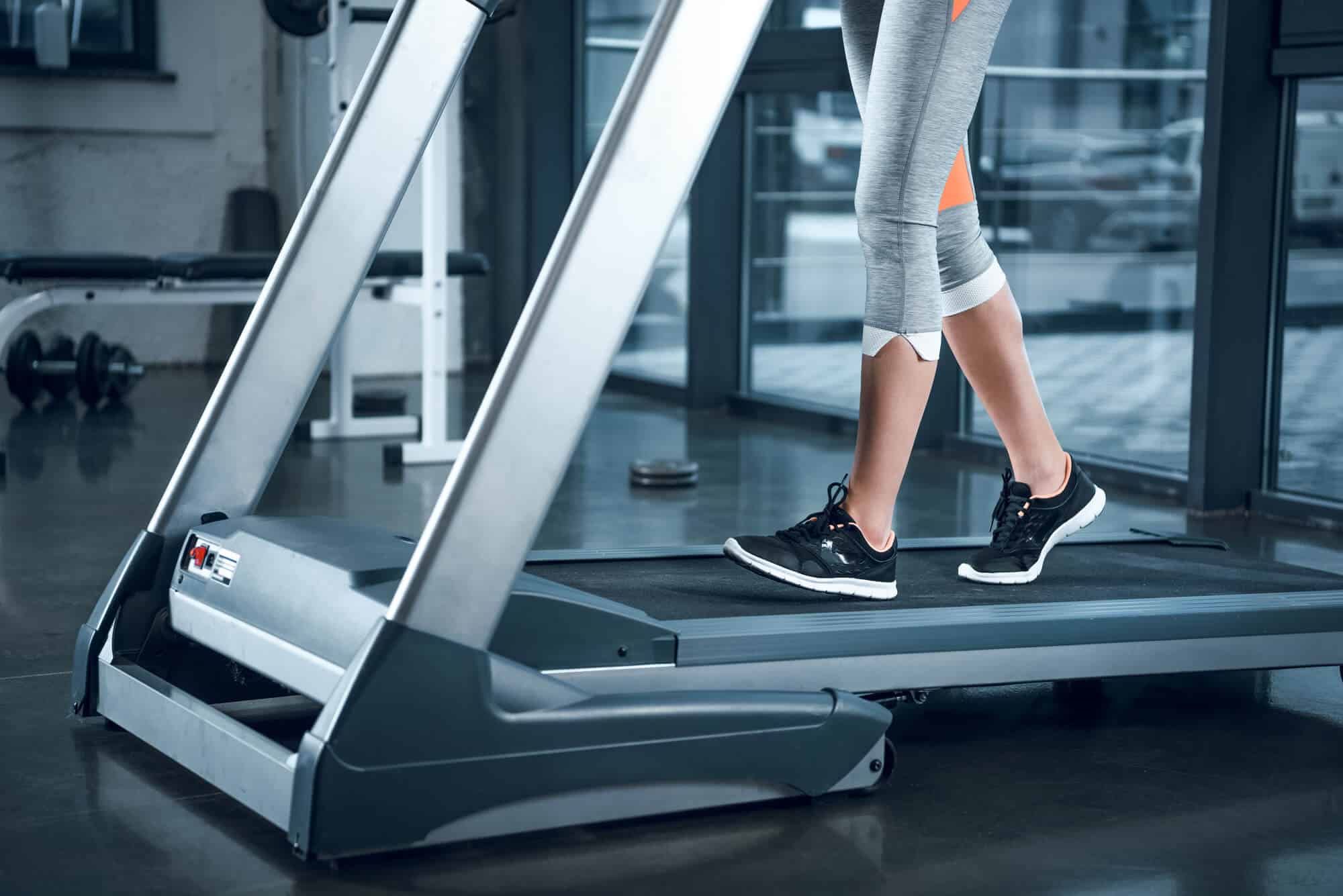Home>Misc>Featured>My Fitness Tracker Can’t Tell How Much Oxygen I’m Using. How Does It Measure METs?
Featured
My Fitness Tracker Can’t Tell How Much Oxygen I’m Using. How Does It Measure METs?
Published: October 17, 2023
Learn how fitness trackers measure METs and why they can't accurately determine oxygen usage. Read our featured article to discover the science behind these devices.
Introduction
Welcome to the world of fitness trackers, where technology and health intertwine to help us monitor and improve our physical well-being. These small, wearable devices have become increasingly popular in recent years, offering a range of features such as step counting, heart rate monitoring, and sleep tracking. But have you ever wondered how fitness trackers measure something as complex as metabolic equivalents, or METs?
METs, short for metabolic equivalents, are a measure of the energy expenditure or oxygen consumption during physical activity. They help us understand the intensity of different exercises and compare them to the calories burned at rest. Fitness trackers rely on this metric to provide accurate data about the intensity of our workouts and to calculate the calories burned during exercise.
But how exactly do fitness trackers measure METs? It’s not as simple as counting steps or detecting heart rate. In this article, we will delve into the intricacies of how fitness trackers measure METs and the limitations of these measurements. We will also explore the importance of oxygen consumption in fitness tracking and how it affects the overall accuracy of these devices.
So, if you’re curious about how your fitness tracker is able to gauge the intensity of your workouts, grab your wearable tech and let’s dive into the fascinating world of MET measurements!
Understanding METs
Before we delve into how fitness trackers measure METs, let’s first understand what METs are and why they are important in the realm of fitness tracking.
METs, or metabolic equivalents, are a unit of measurement that represent the amount of energy used by the body during physical activity. One MET is equivalent to the amount of energy expended while at rest, which is approximately 3.5 milliliters of oxygen per kilogram of body weight per minute. The higher the MET value, the greater the energy expenditure.
For example, walking at a leisurely pace typically has a MET value of around 2.5, meaning you are expending 2.5 times the energy compared to being at rest. On the other hand, running at a moderate pace might have a MET value of 5 or higher, indicating a higher energy expenditure.
METs help us gauge the intensity of different activities and compare them to the calories burned at rest. This enables us to track our progress and set goals for our workouts. For instance, if our goal is to burn more calories and increase our fitness level, we can aim for activities with higher MET values to achieve that.
It’s important to note that the MET value of an activity can vary depending on factors such as age, body composition, and fitness level. A more fit individual may have a lower MET value for a given activity compared to someone who is less fit.
Now that we have a basic understanding of what METs are and how they relate to energy expenditure, let’s explore how fitness trackers are able to measure these values.
How Fitness Trackers Measure METs
Fitness trackers have advanced sensors and algorithms that allow them to estimate METs during physical activity. While different brands and models may use slightly different methods, the general principle remains the same. Here’s a breakdown of how fitness trackers measure METs:
- Accelerometers: Fitness trackers are equipped with accelerometers, which measure changes in velocity and acceleration. These sensors track your movement and help determine the intensity of your activity. For example, walking produces different accelerometer patterns compared to running or cycling, allowing the device to estimate the MET value.
- Heart Rate Monitoring: Some fitness trackers also have heart rate monitoring capabilities. By measuring your heart rate during exercise, the device can estimate how hard your heart is working and use this information to calculate METs. Higher heart rates typically indicate a higher intensity level and, therefore, a higher MET value.
- Algorithms: Fitness trackers utilize complex algorithms that analyze the data from the accelerometers and heart rate sensors to estimate the MET value. These algorithms take into account factors such as your age, weight, gender, and activity type to provide a more accurate estimation of the energy expenditure during exercise.
It’s important to note that while fitness trackers strive to provide accurate MET measurements, there can be some variation and limitations. The accuracy can be influenced by factors such as the quality of the sensors, user positioning, and even the type of activity being performed.
Additionally, fitness trackers are not capable of directly measuring oxygen consumption, which is the gold standard for determining METs in scientific studies. Instead, they rely on indirect measurements and algorithms to estimate the energy expenditure. This can introduce some degree of error into the calculations.
Now that we have explored how fitness trackers measure METs, let’s discuss some of the limitations associated with these measurements.
Limitations of Fitness Tracker MET Measurements
While fitness trackers provide a convenient and accessible way to estimate METs during physical activity, it’s essential to be aware of their limitations. Here are some key limitations associated with fitness tracker MET measurements:
- Accuracy: While fitness trackers strive to provide accurate estimations, their measurements may not be completely precise. Factors such as sensor accuracy, device positioning, and individual variability can all affect the accuracy of the MET readings. It’s important to understand that these measurements are estimations and may not be as accurate as laboratory-based testing.
- Activity Recognition: Fitness trackers rely on algorithms to recognize different activities and determine their intensity. However, these algorithms may not always correctly identify the specific activity being performed. For example, an activity like weightlifting or yoga, which may not involve significant movement, can be challenging for fitness trackers to accurately assess the intensity and estimate METs.
- Individual Variability: Each individual’s body responds differently to exercise, and fitness levels can vary greatly from person to person. Fitness trackers use general formulas and assumptions to estimate METs based on average data, which may not accurately reflect an individual’s actual energy expenditure. Therefore, the readings provided by fitness trackers might not be entirely representative of your personal metabolic rate.
- External Factors: External factors such as environmental conditions, terrain, and equipment can impact the accuracy of fitness tracker MET measurements. For example, running on a hilly surface or using a treadmill with inaccurate speed calibration can affect the device’s estimation of energy expenditure.
- Resting Metabolic Rate: Fitness trackers typically estimate METs during physical activity but may not accurately capture your resting metabolic rate (RMR). RMR represents the energy expended by your body at rest and is an important component in accurately calculating overall energy expenditure. Ignoring RMR can lead to inaccurate estimations of total calories burned.
Despite these limitations, fitness trackers still provide valuable insights into our physical activity levels and can serve as motivational tools to help us stay active. It’s important to use these devices as a general guide rather than relying solely on their measurements for precise data.
Now that we have discussed the limitations, let’s explore why measuring oxygen consumption is crucial in fitness tracking.
Importance of Oxygen Consumption in Fitness Tracking
Oxygen consumption plays a crucial role in fitness tracking because it provides a more accurate measurement of energy expenditure during physical activity. While fitness trackers may estimate METs based on other variables, measuring oxygen consumption directly gives a more precise understanding of the body’s energy demands. Here’s why oxygen consumption is important in fitness tracking:
- Direct Measurement: Oxygen consumption, also known as VO2 (Volume of Oxygen), measures the amount of oxygen your body utilizes during exercise. This measurement is considered the gold standard for determining energy expenditure and can provide more accurate and reliable data compared to the estimations made by fitness trackers.
- Individual Variability: Oxygen consumption takes into account individual differences in fitness and metabolic rates. Since every individual’s body responds differently to exercise, measuring oxygen consumption allows for a more personalized approach to fitness tracking. It accounts for factors such as age, weight, and fitness level, providing a more accurate representation of an individual’s energy expenditure.
- MET Validation: Oxygen consumption measurements allow for the validation of the MET values used by fitness trackers. By comparing the estimated MET values with the actual oxygen consumption data, researchers can ensure that the calculations made by fitness trackers are in line with the true metabolic demands of various activities.
- Training Zones: Estimating oxygen consumption can help determine training intensities and target heart rate zones, leading to more effective and efficient workouts. By knowing the amount of oxygen consumed during different activities, individuals can tailor their exercise routines to achieve specific goals, such as fat burning or improving cardiovascular fitness.
- Health Monitoring: Measuring oxygen consumption is not only beneficial for exercise tracking but also for monitoring overall health and wellness. Impaired oxygen consumption can indicate underlying health conditions or cardiovascular limitations, making it an essential measure in assessing one’s fitness and identifying potential health risks.
While fitness trackers may not be able to directly measure oxygen consumption, understanding its importance in fitness tracking helps us appreciate the role that accurate measurements play in our pursuit of a healthier lifestyle. By considering factors like oxygen consumption, we can make more informed decisions about our activity levels and optimize our fitness routines.
Now that we have explored the significance of oxygen consumption, let’s wrap up our discussion.
Conclusion
Fitness trackers have revolutionized the way we monitor and analyze our physical activity. While they provide valuable insights into our fitness levels and help us stay motivated, it’s important to understand the limitations of their measurements. Accurately estimating METs, or metabolic equivalents, during physical activity is a complex process that relies on sensors, algorithms, and user input.
Although fitness trackers strive to provide accurate estimations of MET values, there can be variations and inaccuracies. Factors such as sensor accuracy, algorithm assumptions, and individual variability can all affect the precision of the measurements. In addition, fitness trackers do not directly measure oxygen consumption, which is the gold standard for determining energy expenditure during exercise. Instead, they rely on indirect measurements and algorithms to estimate METs.
Nevertheless, fitness trackers still play a valuable role in improving our overall health and wellness. They provide us with a convenient way to track our activity levels, set goals, and monitor progress. By understanding the importance of oxygen consumption and the limitations of fitness tracker measurements, we can use these devices as general guides to our fitness journeys.
Ultimately, it’s important to listen to your body and use fitness trackers as tools to enhance your understanding of your physical activity, rather than relying solely on their readings. Incorporating other factors such as perceived exertion, heart rate monitoring, and individual goals will contribute to a more holistic approach to fitness tracking and overall well-being.
So, whether you’re walking, running, or hitting the gym, remember that while your fitness tracker may not be able to measure every aspect of your workout, it can still be a valuable companion in your journey towards a healthier, more active lifestyle.






